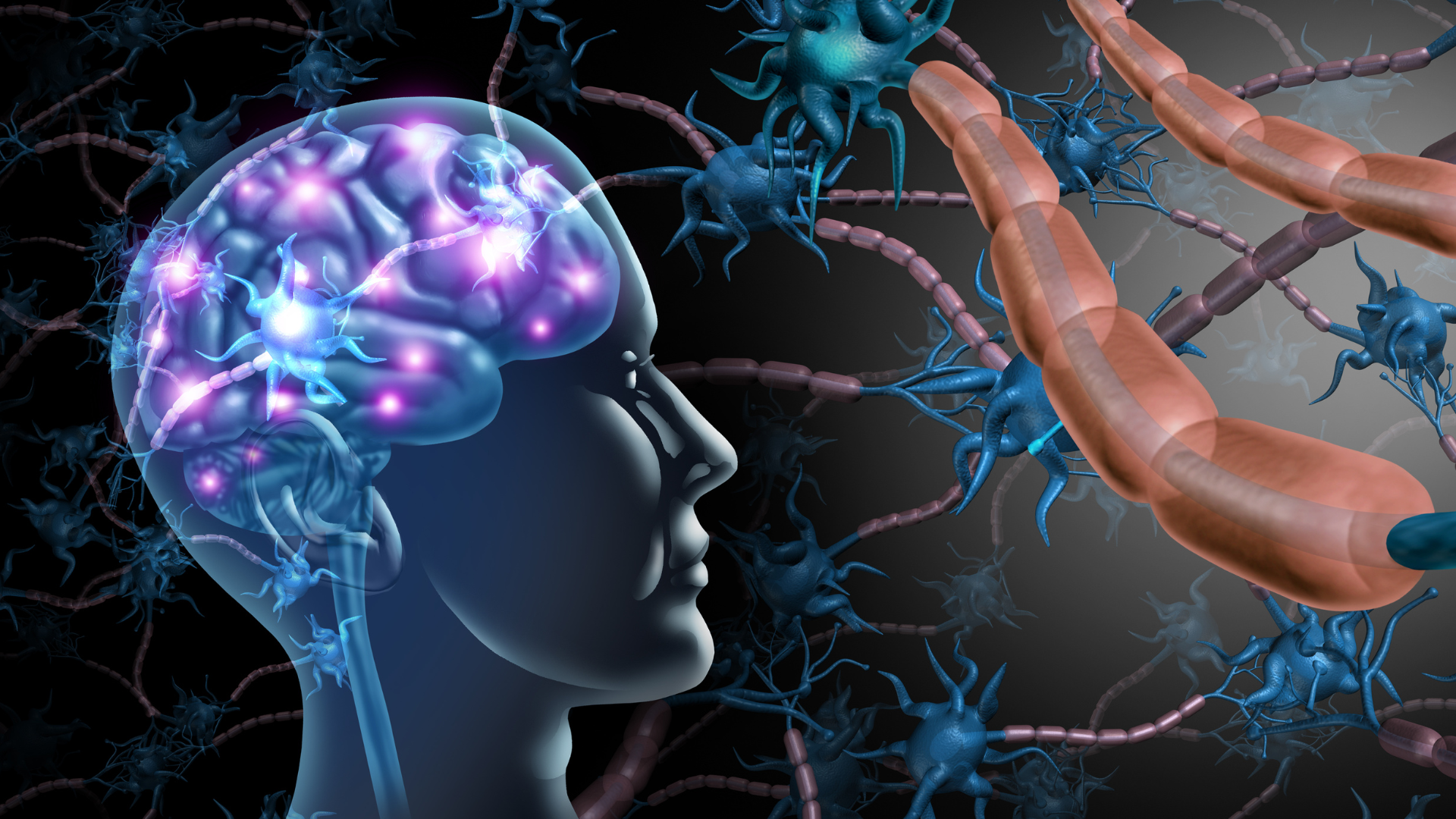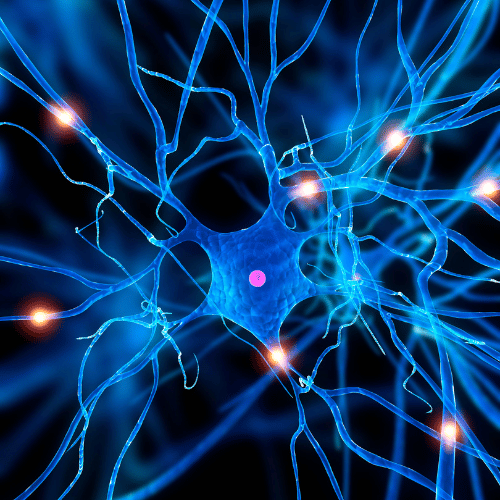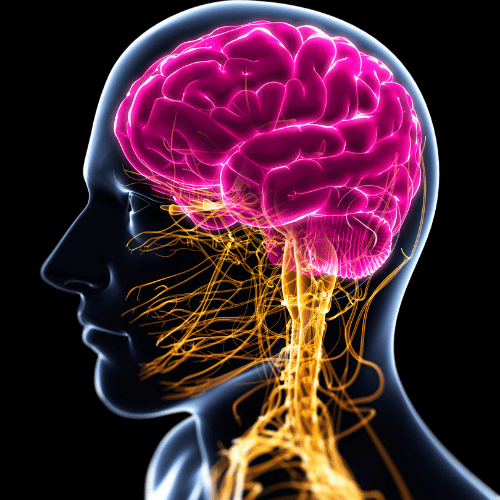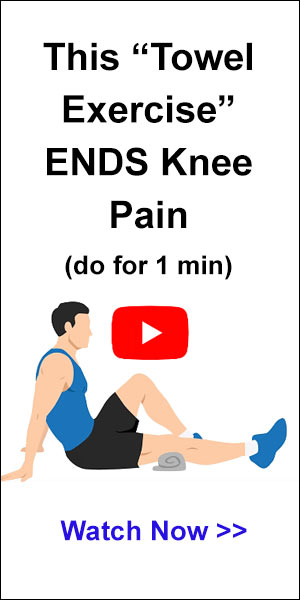
8 Warning Signs of Sciatica
Today, we’re addressing a topic that affects many people but often goes unrecognized until it becomes severe: Sciatica.
Sciatica refers to pain that radiates along the path of the sciatic nerve, which runs from your lower back through your hips and buttocks, and down each leg.
It’s important to identify the warning signs early, so you can seek appropriate treatment and manage your symptoms effectively.
Now, let’s dive in and understand these 8 warning signs, so you can be better informed about sciatica and its impact on your health and mobility.
Number 8. Lower Back Pain
Kicking off our list at number 8, we have Lower Back Pain, a common precursor to sciatica that many of us might overlook.
Now, who hasn’t experienced lower back pain at some point, right? But when it comes to sciatica, this pain isn’t just your typical ‘I slept funny’ or ‘I’ve been sitting too long’ kind of discomfort.
Sciatica often originates in your lower back, where the sciatic nerve is located. This pain can vary greatly in intensity – it might start as a dull ache and gradually escalate to more severe, sharp pains.
Interestingly, a study published in the ‘European Spine Journal’ highlighted that lower back pain is frequently a companion of sciatica. This means that if you’re experiencing persistent lower back pain, it could be a sign that your sciatic nerve is distressed.
Now, let’s talk a bit about the sciatic nerve. It’s the longest and widest nerve in the body, running from the lower back, through the buttocks, and down each leg.
When this nerve is irritated or compressed, it can cause pain that radiates from the lower back down to your legs, which is essentially what sciatica is.
Several factors can contribute to this initial lower back pain.
It could be a herniated disc, where the soft material inside a disc bulges out and presses on the nerve.
It might be due to spinal stenosis, which is a narrowing of spaces in the spine that compresses the nerves.
Sometimes, it’s triggered by an injury or even pregnancy.
Recognizing and addressing lower back pain early can be crucial in preventing the full-blown sciatica experience. It’s like your body’s way of sending a warning signal.
Ignoring this pain or just pushing through it might lead to more severe sciatic symptoms.
Number 7. Pain in the Buttocks or Leg that Worsens When Sitting
Moving on to number 7, we encounter another classic symptom of sciatica: Pain in the Buttocks or legs that Worsens When Sitting.
This particular symptom is a bit of a step up from the lower back pain we discussed earlier.
When sciatica starts affecting your daily activities, one of the most telltale signs is the discomfort you experience in your buttocks or legs, especially when sitting.
This isn’t just any ordinary pain. We’re talking about a sharp, shooting kind of pain, or even something that feels akin to an electric shock.
It’s the kind that makes you shift in your seat, trying to find a less painful position.
If you find this pain intensifying while sitting, it’s because sitting for long periods can put extra pressure on your sciatic nerve.
Remember how we mentioned that the sciatic nerve runs from your lower back, through your buttocks, and down your legs?
When you’re seated, particularly for a prolonged time, this can exacerbate the nerve compression or irritation, leading to intensified pain.
Another key aspect of this symptom is its tendency to affect only one side of the body.
Sciatica usually doesn’t play the equality game – it often chooses either your left or right side to manifest its pain.
Number 6. Burning or Tingling Down the Leg
Continuing our exploration of sciatica symptoms, we arrive at number 6: the Burning or Tingling Sensation Down the Leg.
Many people with sciatica also experience a sensation that can be described as burning or tingling.
This sensation typically travels down the leg, following the path of the sciatic nerve.
It’s a feeling that’s hard to ignore and can range from mildly irritating to quite distressing.
The burning or tingling is a direct result of the irritation or compression of the sciatic nerve.
When this nerve is pinched or inflamed, it can cause an array of sensations, including a tingling or burning feeling.
It’s your body’s way of signaling that something is not right with the nerve pathways.
What makes this symptom particularly indicative of sciatica is its pathway.
Unlike general leg pain or discomfort, this burning or tingling sensation usually follows a very specific route, mirroring the sciatic nerve’s path from the lower back, through the buttocks, and down the leg.
This burning or tingling sensation is a significant indicator of sciatica.
It’s different from the usual leg fatigue or muscle soreness.
So, if you’re experiencing this symptom, especially in conjunction with lower back pain and the pain that worsens when sitting, it’s advisable to consult with a healthcare professional.
Early intervention can help manage the symptoms more effectively and prevent further aggravation of the sciatic nerve.
Number 5. Weakness, Numbness, or Difficulty Moving the Leg or Foot
As we progress to number 5 in our discussion of sciatica symptoms, we encounter another critical sign: Weakness, Numbness, or Difficulty Moving the Leg or Foot.
This symptom marks a progression in the severity of sciatica’s impact on the body.
Unlike the previous symptoms we’ve discussed, like the sharp pain or the burning sensation, this one shifts into the realm of physical functionality.
Sciatica can lead to muscle weakness, numbness, or even difficulty in moving the affected leg or foot.
This isn’t just about feeling discomfort; it’s about experiencing a noticeable change in your ability to use your leg or foot normally.
The reason behind this symptom is rooted in the way sciatica affects the sciatic nerve.
According to a study published in the journal ‘Spine’, sciatica can have a significant impact on motor function and reflexes.
As we already know, the sciatic nerve plays a crucial role in controlling the muscles of the leg and foot, and when it’s irritated or compressed, it can impair these functions.
When you start experiencing weakness or numbness in your leg or foot, or find it challenging to move them, it indicates that the sciatica is not just affecting the nerve in terms of pain or sensation but also impacting its motor function.
This can manifest in various ways, such as difficulty in lifting the foot (often referred to as foot drop), challenges in performing regular walking motions, or even a decreased ability to respond to reflex tests.
This symptom is particularly important to pay attention to because it affects mobility and independence.
Not only is it distressing, but it is also limiting in terms of daily activities and quality of life.
Number 4. Constant Pain on One Side of the Rear
Moving on to number 4 in our list of sciatica symptoms, we encounter a specific and telling sign: Constant Pain on One Side of the Rear.
This symptom is particularly distinctive in identifying sciatica.
What sets sciatica apart from general lower back pain is its tendency to affect just one side of the body.
If you’re experiencing a persistent, nagging pain on one side of your rear, it could be a clear indicator of sciatica.
This pain often originates in the lower back, as we discussed earlier, but it specifically targets one side, radiating through the buttocks down to the leg.
The unilateral nature of this pain – affecting either the left or right side – is due to the sciatic nerve’s pathway.
While we have sciatic nerves on both sides of our body, sciatica typically occurs on just one side.
This is often because of a localized issue, such as a herniated disk or a bone spur, pressing on only one of the sciatic nerves.
This constant pain on one side of the rear can vary in its manifestation.
Some people might experience it as a dull ache, while others might find it sharp and incapacitating.
Regardless of how it feels, the persistent nature of this pain and its localization to one side of the rear is a significant symptom that shouldn’t be overlooked.
Number 3. Sharp Pain that Makes it Difficult to Stand Up
Continuing our discussion on sciatica symptoms, at number 3, we come across a particularly debilitating one: Sharp Pain that Makes it Difficult to Stand Up.
This symptom can be a major hindrance in daily life for those suffering from sciatica.
This sharp pain, often experienced in the lower back, buttock, or down the leg, can be so severe that it affects basic movements like standing up from a seated position.
Imagine sitting at your desk, on your couch, or in a car, and as you try to stand up, you’re met with a jolt of sharp pain that almost feels like it’s locking you in place.
This pain is a direct result of the compression or irritation of the sciatic nerve.
When you’re sitting, the pressure on your lower spine and sciatic nerve can increase, and moving from this position to standing can exacerbate the pain.
It’s a sudden shift that can catch the already irritated nerve off guard, leading to a spike in pain.
The intensity of this pain can vary from person to person, but in many cases, it can be quite severe, impacting one’s ability to move freely.
This limitation in mobility can significantly affect a person’s daily activities and quality of life.
It’s not just about enduring the pain, but also about how it restricts your normal functioning.
Consulting with a healthcare professional is crucial to addressing this symptom effectively, managing the pain, and regaining mobility.
Number 2. Pain that Radiates from the Lower Spine to the Buttock and Down the Back of the Leg
At number 2, we focus on a defining characteristic of sciatica: Pain that Radiates from the Lower Spine to the Buttock and Down the Back of the Leg.
This symptom is essentially the hallmark of sciatica, distinguishing it from other types of back or leg pain.
This radiating pain is what typically brings sciatica to attention.
It starts in the lower spine – an area we previously discussed as a common starting point for sciatic discomfort.
From there, it travels to the buttock, and then it follows a path down the back of the leg.
This trajectory mirrors the course of the sciatic nerve, the longest nerve in the body.
Why does the pain travel this specific path? It’s because the sciatic nerve branches from the spine, runs deep through the buttock, and extends down the length of the legs.
When this nerve is compressed or irritated – often due to a herniated disc, bone spur, or sometimes even muscle tension – it causes pain that doesn’t just stay put; it radiates.
What sets this symptom apart from other types of back or leg pain is its specific path of radiation.
It’s not a localized discomfort but a pain that travels a distinct route. This characteristic makes it a key symptom in diagnosing sciatica.
If you’re experiencing pain that starts in your lower back, moves to your buttock, and then radiates down the back of your leg, it’s a strong indication that you might be dealing with sciatica.
This symptom, especially when combined with the other signs we’ve discussed – like the sharp pain making it difficult to stand up, or the burning and tingling sensations – warrants attention and medical evaluation.
Number 1. Pain that is Relieved by Lying Down or Walking
Finally, at number 1 on our list of sciatica symptoms, we encounter a symptom that offers a hint of respite: Pain that is Relieved by Lying Down or Walking.
This unique aspect of sciatica can be a critical clue in identifying the condition.
For many experiencing sciatica, finding a comfortable position seems like a constant battle.
However, a common observation is that certain positions, such as lying down or walking, can actually provide relief from the pain.
This contrast in comfort levels is quite telling of sciatica.
While sitting or standing still, especially for prolonged periods, can aggravate the pain due to increased pressure on the sciatic nerve, changing positions by lying down or moving around often eases this discomfort.
Lying down can relieve the pressure off the sciatic nerve, especially if you lie in a position that doesn’t put strain on your lower back.
Similarly, gentle walking can help by stimulating blood flow and reducing muscle tension around the sciatic nerve.
It’s about finding that sweet spot where the nerve isn’t compressed or irritated.
This symptom is your body’s way of guiding you towards positions and activities that alleviate the pain.
It’s an important signal that shouldn’t be ignored.
Paying attention to how your body responds to different positions and activities can be key in managing sciatica.
It’s important to note that while these are common symptoms of sciatica, they can also be indicative of other conditions.
Therefore, a proper medical diagnosis is crucial.
If you experience any of these symptoms, it is advisable to consult a healthcare professional for an accurate diagnosis and appropriate treatment plan.
Remember, early recognition and intervention can make a significant difference in managing sciatica effectively.
And there we have it, our comprehensive look at the ‘8 Warning Signs of Sciatica’.
By being aware of these warning signs, you’re better equipped to take proactive steps in your healthcare journey.
Have you or someone you know experienced these symptoms of sciatica?
What was your journey like in recognizing and managing these signs?
Share your experiences in the comments below.
They could really help and give hope to others who are going through the same thing.









